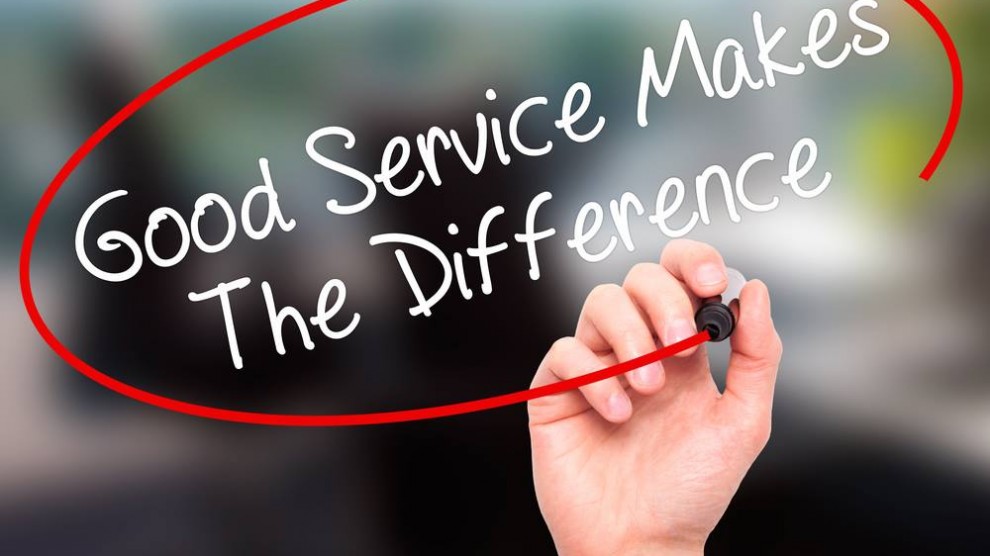January 14, 2019
What Can We Learn From Other Industries About the Patient Payment Experience?

The patient payment environment is changing fast, and merchant services are going to be a key driver of that change. The healthcare industry is quickly realizing that patients don’t treat their healthcare interactions all that differently than they do paying a cable bill or shopping online, but that realization has invited a lot of questions from patient finance departments.
What Can We Learn From Other Verticals?
Drawing insights from other industries that are more advanced in the use of merchant services can help shape the patient payment experience and improve revenue cycle efficiency. Although the relationships retail giants or local banks have with their consumers are much different than the relationships between providers and patients, there are many commonalities with respect to payments.
Retailers, for example, strive to increase sales and create consumer loyalty to encourage repeat purchases. They go to great lengths to reduce any friction in the payment process to give consumers the ability to pay for goods and services where they want, when they want, and how they want with safety and security.
A healthcare organization’s mission is to deliver excellent care with a satisfactory experience for patients. The payment process is a critical component of the overall healthcare experience and should be as frictionless and secure as possible – much like the retail payment experience – to foster the acquisition of new and returning patients (and their payments).
Patients are Savvy Consumers
Patients have a choice in where they receive their healthcare, from which providers, and how often. Many factors drive those decisions, including the way the care is or will be administered, past experiences (positive and negative), location, and convenience.
The financial impacts of a care decision also weigh heavily on patients’ minds. A previous negative billing experience may reduce the likelihood of a patient returning to a provider for future care, especially when other options exist.
Billing errors, confusing statements, poor customer service, and difficulty making payments can all result in a negative financial experience. A 360° payment and communication solution can optimize every patient touch point to encourage action. Clearly stating a patient’s self-pay obligations before or at the time of an appointment and presenting them with their full payment options can also alleviate unnecessary stress around medical bills and influence provider choice.
Patients Use Alternative Payment Methods
As patient self-pay obligations continue to rise and high deductible health plans become more prevalent, patients will look for ways to ease the financial burden.
Patients taking advantage of flexible spending accounts and health savings accounts often use pre-paid debit cards for their healthcare transactions. The ability to collect these payments at the point of service and in the online bill payment environment is a necessity.
Rewards credit cards are also commonly used for medical bills. These cards carry a higher interchange rate, meaning the fee paid by the card acceptor to the card issuing bank is higher to subsidize float, risk, and other card program expenses such as airline mileage or cash back.
Other patients are looking to providers for financing or payment plan options. Making sure patients are aware of their options and can access more information, instructions, or support are easy ways to improve payment rates.
Other “Necessity” Verticals
In most cases, patients don’t voluntarily incur healthcare expenses. They typically result from emergencies, health scares, or obligational visits. Learning from other industries that provide necessities or perceived necessities is an area of opportunity for healthcare revenue cycle leaders. Two verticals that fall into this category are utilities and education.
Utility providers have had success with timely payment collection by implementing auto payments. This “set it and forget it” mentality is convenient for consumers and fruitful for utility companies. Healthcare providers have the same opportunity to increase payment efficiencies by offering payment plan options and using technology to manage auto-pay and scheduled payments.
Education has another commonality with healthcare in that third parties make a majority of payments. Schools must ensure students maintain good academic and financial standing to achieve enrollment and quality criteria. It is to their benefit to offer alternative funding sources such as private financing and payment plans to help in this effort.
A Tech-Forward Approach to Meeting Consumer Demands
Healthcare has no shortage of regulation, not only for health information but also for payment networks. Keeping up with consumer demands requires a tech-forward strategy — one that is tailored to patient preferences and anticipates needs while meeting all of the stringent regulatory requirements.
Healthcare providers have the opportunity to partner with a merchant services provider that can bring all the relevant payment options, reliable and secure payment platforms, high authorization rates, and value-add services to enhance the patient experience.
For more merchant services insights, view the on-demand webinar, “Lessons for the Future of Merchant Services: Insights From Other Verticals.”
RevSpring Can Help
Integrated payment communication is part of RevSpring’s DNA. We tailor the payment conversation to influence behavior and inspire action. Our segmentation rules and workflows help you become hyper-focused on the patient, understanding their ability to pay and mapping their financial obligations to repayment pathways.
If you’d like to learn more about our comprehensive patient engagement and billing solutions, we’d love to help you. Request a demo to see how we can help your organization meet its goals.